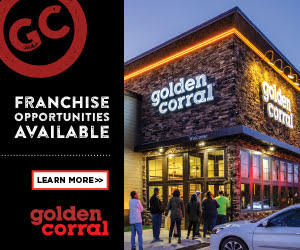Menu Labeling Is Certain, But Uncertainty Remains In Implementation...
Over the last several years, a number of jurisdictions have enacted legislation requiring chain restaurants to disclose caloric content and other information regarding their foods. Most commonly, caloric content must be placed on the menu board or menu near the corresponding food item.
The patchwork of state and local laws, as well as a new focus on obesity prevention, led to federal menu labeling legislation. The legislation was contained in the Patient Protection and Affordable Care Act of 2010, commonly known as the health care bill, which was signed on March 23, 2010.
The federal law is in effect but the Food and Drug Administration (FDA), the agency responsible for enforcement, has announced its intention to delay enforcement, stating that the agency "is aware that industry may need additional guidance from FDA and time to comply with the provisions... that became requirements immediately upon enactment of the law." The law applies to food establishments (restaurants, vending machines, etc.) that are part of a chain with 20 or more locations nationwide.
Basic requirements
- The calorie content of each menu item must be disclosed on all menus, menu boards, drive-through boards, and other forms of menus (such as Internet and take-out menus if they are the primary menu used for ordering, hereinafter "menus") and self-service displays, except for items that are offered for fewer than 60 days a year or for market testing of fewer than 90 days on a menu.
- Number of calories (per item or serving) must be displayed adjacent to self-service food and food on display.
- Menus must include a statement designating the total daily recommended calories.
- Upon customer request, the establishment must provide "nutrition facts" in written form: 1) the total number of calories; 2) the total number of calories derived from fat; and 3) the total amount of fat, saturated fat, cholesterol, sodium, carbohydrates, sugars, dietary fiber, and protein in each serving.
- Menus must include a prominent statement that the written nutrition information is available to customers upon request.
- State or local labeling requirements, such as warning statements, consumer advisories, or allergen labeling concerning the safety of the food or a component of the food are unaffected, but federal law preempts non-identical state laws.
- Restaurant operators that are part of a chain with fewer than 20 locations can voluntarily participate in the federal act by registering with the FDA.
Implementation: what's on the menu
Uncertainty remains, but upcoming guidance should help. Recently released draft guidance indicates that:
- covered food establishments include movie theaters, coffee shops, school lunch rooms, convenience stores, and even transportation carriers (e.g., airlines and trains);
- food establishments will be considered part of the same chain even though there are variations in the name of the establishments (e.g., "Tony's BBQ" and "Tony's BBQ Express");
- menu items will be viewed based upon the recipe and method of preparation rather than the name of the item;
- additional nutritional material can be provided on a counter card, sign, poster, handout, binder, booklet, or electronic device;
- the FDA will require implementation of some menu labeling requirements now, while other requirements will wait until the FDA prepares a final rule, but the FDA will refrain from enforcement until it has issued its final guidance;
- guidance for items that come in different flavors or varieties, such as soft drinks, ice cream, pizza, doughnuts, and children's combination meals will be forthcoming; and
- the menu that is the "primary writing" upon which the customer makes an order selection may vary among restaurant types.
Most franchise systems in the food service industry will have to adapt to the new federal requirements. Although franchisees that are part of a covered system will have the legal obligation to comply and disclose the appropriate nutritional information, practically, the franchisor should want to assume the obligation to provide the nutritional information for the standard menu items. Franchisors will need to continue to stress uniformity (e.g., adding more rice into a burrito could make the nutritional information very inaccurate).
As the public becomes more aware of the availability of nutritional information, the information will likely assist in menu choices. Those covered and non-covered systems that embrace and adapt to the new disclosures may be able to woo new customers who rely on accurate and easily obtained nutritional disclosures.
Anthony Marks is an attorney at Bryan Cave LLP in Santa Monica, Calif. He is a certified franchise and distribution law specialist by the California State Bar Board of Legal Specialization. He can be contacted at 310-576-2162 or [email protected]
Share this Feature
Recommended Reading:
FRANCHISE TOPICS
- Multi-Unit Franchising
- Get Started in Franchising
- Franchise Growth
- Franchise Operations
- Open New Units
- Franchise Leadership
- Franchise Marketing
- Technology
- Franchise Law
- Franchise Awards
- Franchise Rankings
- Franchise Trends
- Franchise Development
- Featured Franchise Stories






 The franchise legal listed above are not related to or endorsed by Franchise Law News or Franchise Update Media Group. We are not engaged in, supporting, or endorsing any specific franchise, business opportunity, company or individual. No statement in this site is to be construed as a recommendation. We encourage prospective franchise buyers to perform extensive due diligence when considering a franchise opportunity.
The franchise legal listed above are not related to or endorsed by Franchise Law News or Franchise Update Media Group. We are not engaged in, supporting, or endorsing any specific franchise, business opportunity, company or individual. No statement in this site is to be construed as a recommendation. We encourage prospective franchise buyers to perform extensive due diligence when considering a franchise opportunity.